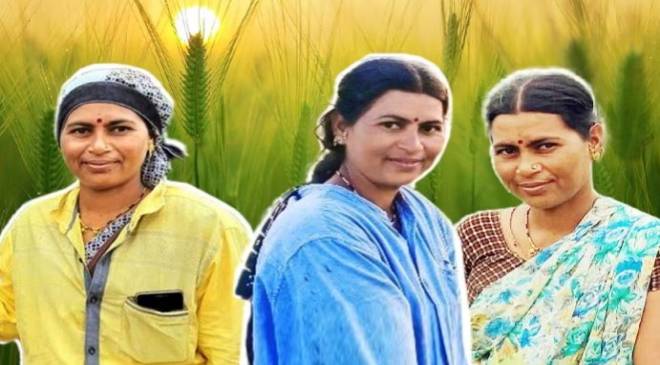Savita started with 400 women from her village. She trained them to efficiently use a mobile phone and social media platform. Today, she manages two Facebook groups which combinedly comprise over a million women farmers from across India.
Read More: Proxgy launches AudioCube for UPI and CBDC payment notifications
New Delhi: Savita Dakle’s story is a mixture of unexpected hardships from a very young age and how she braved through it. Today, she is a well-known figure in the field of women empowerment. She has managed to create two groups on social media that have brought together over a million women farmers across India.
Struggled At An Early Age
When she was in her seventh grade, Savita Dakle’s father lost his job as the factory in Aurangabad where he worked, had shut down, according to HerStory. At the same time, her mother had started to earn as a vegetable vendor in the city.
“One day, I was told by the school to ask for Rs 1000 for uniforms and books or buy them, but I never told my father. After a few days, the teacher called him and came to know he was clueless and my father started crying,” said Savita in an interview with HerStory.
Soon, her two elder sisters got married and her parents moved to the village to try farming. Savita also had two younger brothers. In order to support their education, Savita had to drop out of education at 10th grade and take up a job at a pharmaceutical company.
Life As A Farmer
In 2002, Dakle got married to a family of farmers in Pendagaon. This marked the beginning of her life in the village as a farmer. Her in-laws introduced her to working at the farm when they enrolled her as an agricultural labourer (mazdur) where she earned Rs 200 per hour, as per the report.
“I had never worked on the farm before, but I always had a lot of confidence that I could do anything,” Dakle told HerStory.
Read More: From Punjab To Canada, How Ronnie Teja Built A Global Empire
In the village, there used to happen a Seva Samta where women gather to discuss farming practices and challenges. Savita was initially forbidden by her in-laws to join those meetings. However, she managed to convince her husband and her in-laws to attend one such meeting when she got the opportunity.
“I told them I’ll work two extra hours later and stayed because there was a lot of information being given out. My in-laws later scolded me so much that I cannot express how much I had to bear for just those two hours,” she told HerStory.
After a three-hour-long interview process, Savita’s membership with Seva Samta was confirmed. Her knowledge regarding the usage of smartphones and social media, she hoped to spread awareness around best practices in farming. Her father had given a Jio phone before her marriage, and after she joined the community, she created a Facebook group, as per HerStory.
Beginning A Movement
Savita started with 400 women from her village. She trained them to efficiently use a mobile phone and social media platform. Today, she manages two Facebook groups which combinedly comprise over a million women farmers from across India.
“People used to tell me that I am always busy on the phone, but I knew what I was doing. Still, I never imagined creating such a huge group of women farmers. I never thought I could bring women farmers together this way,” she told HerStory.
In the social media network, they discuss everything related to farming from tips and tricks of sowing and harvesting different types of crops to pricing them in the market.
Savita recalls in the interview that most women have little knowledge of how things work, especially when it comes to the cost of products, buying and selling things, et cetera.
Read More: Meet Suditi Sharma, Indore woman who made Rs 110 crore firm without funding, says ‘if you aren’t IIT, IIM…’
“I learnt by stepping out, networking, and insisting on going with my husband to understand why and how much to pay,” she said.
In a clear sign of her inspiring nature, women in Savita’s village used to be surprised when Savita went out to pay the electricity and other household bills, but today, many of them take charge by using mobile wallets and payment facilities to make their own payments.





































